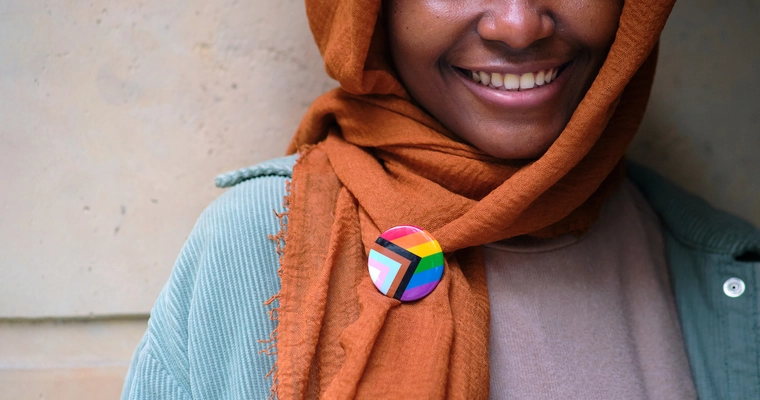Questioning your sexuality? Here are some things to keep in mind.
"We don't know where we're going, but we know where we belong"

Some people have gone through the process of exploring their sexuality and feel satisfied that they know what they want and how they identify. For others, understanding and exploring their sexuality can be a life-long journey. Unfortunately, we live in a society where exploration outside the strict confines of heteronormativity is often discouraged. And for many people, exploring and expressing their sexuality can be unsafe due to their legislators and/or the people around them. But you’re safe at Bedsider. We love you, we live for your fulfillment, and we think investing in finding out who you are is always awesome. If you know you want to explore your sexuality, but not sure where to start, we’ve got some ideas for you:
1. Start with curiosity
Approaching any situation with curiosity, even the ones that may feel a little scary or confusing, allows you to get the most out of the experience. And of course, curiosity is the key to self-discovery. So start by asking yourself simple questions like, “What do I fantasize about?” and, “Who have I had crushes on?” The answers may make your next steps clearer.
2. Take or leave the labels
We describe sexuality and sexual orientation as a spectrum for a reason. There are infinite points on a spectrum, and you can be wherever you want to be—in a fixed spot, in multiple places at once, or in different places at different times. If researching labels (like looking into the many facets of asexuality) helps you understand yourself better, and it feels good to you to categorize where you fit, then that’s great! If labels feel confining, reductive, unnecessary, or bad for any reason at all, skip them! You’re you, and that’s all that really matters.
3. Experiment respectfully
If you find yourself wanting to take the next step, trying new things and indulging in fantasies can be a great way to figure out what you like. You can do this alone or with a partner or partners. Just be sure to clearly communicate to any partners about what you are looking for—as always, it’s not cool to give the impression that you’re interested in something, like a relationship or even a situationship, if you’re not.
4. Don’t forget birth control is for LGBTQIA+ people too
We’ve said it before and we’ll say it again—there are so many reasons why LGBTQIA+ people use and benefit from birth control. One of which is pregnancy prevention. Whether you or a partner can get pregnant doesn’t depend on how you or they identify. All that matters when it comes to whether you or they can get pregnant is what body parts you have, what body parts they have, and what you do with them. If one of you has a penis and one has a vagina, uterus, and ovaries, and you have penis-in-vagina sex (aka receptive frontal sex), pregnancy can happen. So if pregnancy is possible for you based on your situation, check out your birth control options and find one that works for you.
5. Stay on top of your sexual health
While other forms of birth control can help you prevent pregnancy, only condoms and internal condoms can both prevent pregnancy AND provide STI protection (and we love a good 2-for-1). Other types of STI protection that don’t prevent pregnancy at the same time include dental dams, gloves, and PrEP (pre-exposure prophylaxis). PrEP is a daily pill or an injection you can get every two months to decrease your risk of getting HIV. And getting regular STI testing is a good practice.
Enjoy the journey and know that we’re here for you!
How do you feel about this article?

Heat up your weekends with our best sex tips and so much more.